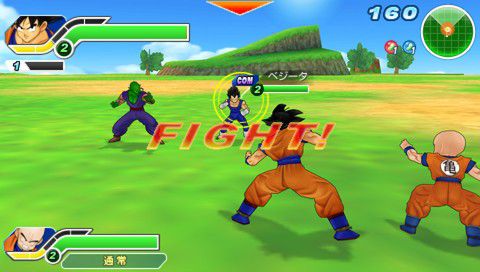

One of these moves is the Ultimate Blast which is usually the most powerful move a character has, though use of any Blast 2 skill or the Ultimate Blast immediately ends Max Power Mode. Max Power Mode makes the character that initiated it faster, stronger, and able to use moves that are exclusive to the mode. Players can also power up into a mode called Max Power Mode normally by building up their Ki beyond full at the cost of Blast Stock bars. Blast 1 skills usually have a supportive effect such as allowing characters to regain health or immobilize the enemy. Characters also have a self-recharging numeric gauge called Blast Stock that allows players to use techniques called Blast 1 skills. Every character has a unique set of Blast 2 skills that allow the character to use special moves such as Ki blasts and physical attacks. The Ki gauge can also be used to use moves referred to as Blast 2 skills. In battle, players can build up their Ki gauge to execute various techniques such as the Power Guard, which reduces the damage characters take by 1/4. Similar to the Super Famicom-released Dragon Ball Z: Legendary Super Warriors, special forms are treated as their own character, with varying stats, movesets and fighting styles. The games use a "behind-the-back" third-person camera perspective. Super Saiyan Goku using the Kamehameha wave against Hirudegarn in Budokai Tenkaichi 3. While Sparking! features actual music from the Dragon Ball Z anime series (as well as the Dragon Ball and Dragon Ball GT anime) as composed by Shunsuke Kikuchi, the American release of the first game features recycled music from the Budokai series (composed in Japan by Kenji Yamamoto). Its been speculated that Atari chose to market the games as part of the Budokai series in order to capitalize on its success. Despite the localized title, the series is not a continuation of the Dragon Ball Z: Budokai series.

The North American title is a rearranged version of Tenkaichi Budokai ( 天下一武道会, Tenka'ichi Budōkai, roughly "Strongest Under the Heavens Martial Arts Tournament") (also known as the Tenka-ichi Budōkai), a reoccurring tournament featured in the manga and anime series. The "Sparking!" in the Japanese title references the last lyric found in the chorus of the first opening theme to the Dragon Ball Z anime series, " Cha-La Head-Cha-La" ) though the opening theme to the first game is the TV series' second opening, " We Gotta Power").


 0 kommentar(er)
0 kommentar(er)
